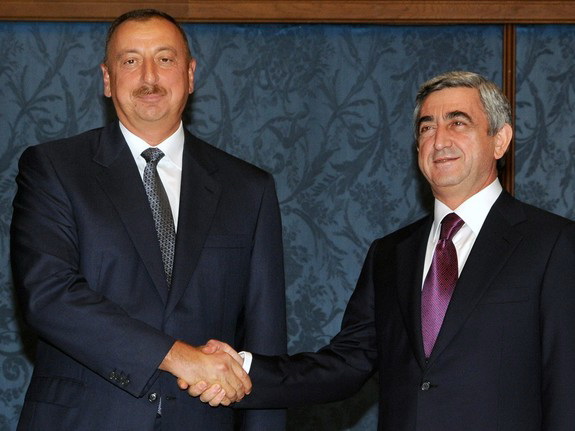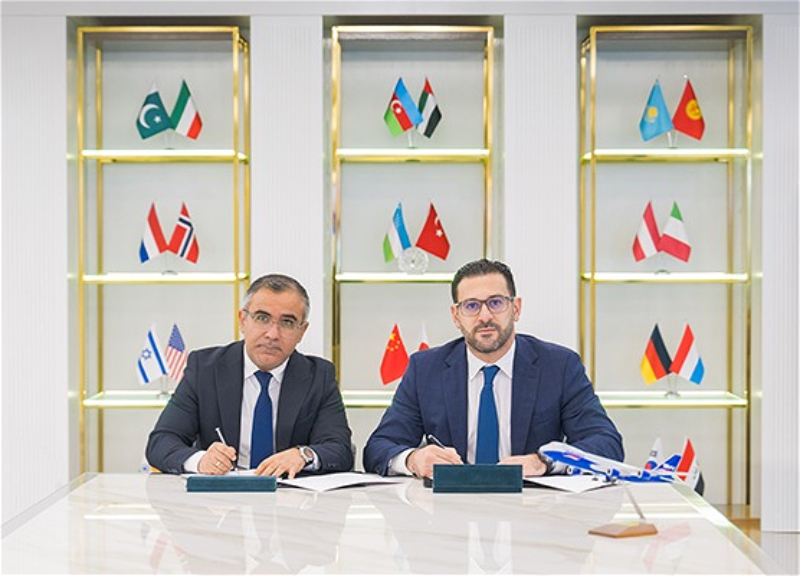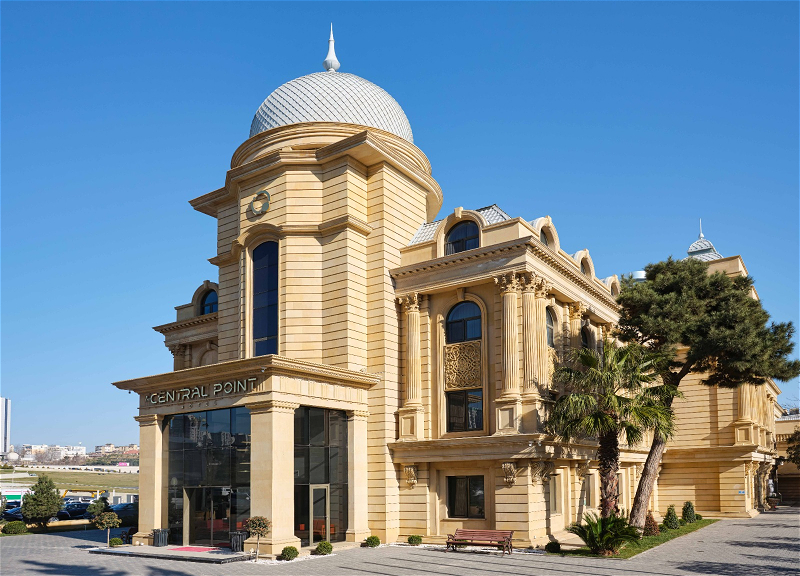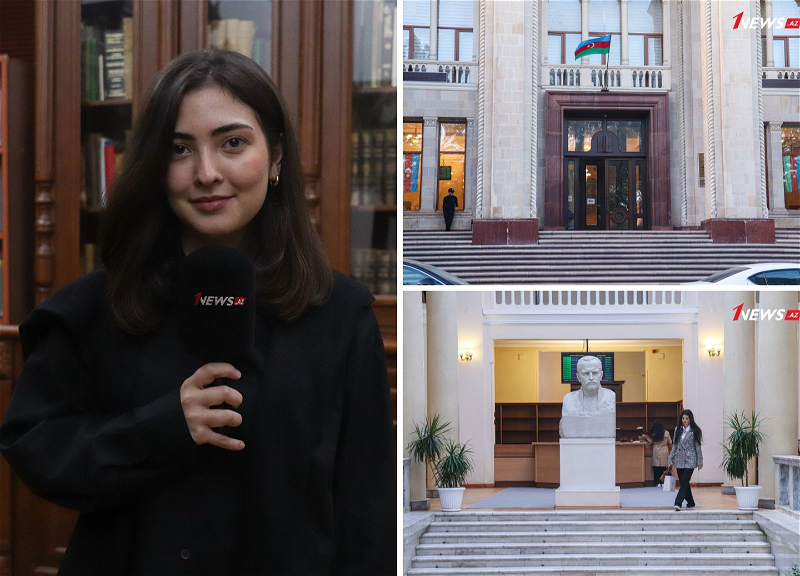No headway on Nagorno-Karabakh: Cui bono?

Some positive dynamics has been observed in the Nagorno-Karabakh negotiation process recent months, but also counter-productive statements have resonated, writes Gulshan Pashayeva.
Dr Gulshan Pashayeva is deputy director of the Centre for Strategic Studies under the President of the Republic of Azerbaijan.
On 9 February 2018 the 15th meeting of the Cooperation Council between the EU and the Republic of Azerbaijan was held in Brussels. Its broad agenda included, among other burning issues, the state of play around the unresolved Armenian-Azerbaijani conflict over Nagorno-Karabakh.
Suffice it to say that, following the ceasefire agreement achieved between the conflicting parties in May 1994, two Azerbaijani Presidents and three Armenian Presidents have been consecutively involved in the Nagorno-Karabakh negotiation process for more than twenty years. However, there is no settlement in sight so far.
One of the important prerequisites of any peace agreement is preparedness of the leadership to develop a clear vision of a common future that can satisfy to a certain degree both conflicting parties.
For example, Azerbaijani and Armenian Presidents Heydar Aliyev and Levon Ter-Petrosyan demonstrated such a behaviour and were ready to move forward with a step-by-step approach to the settlement of this conflict in 1997. However, due to the strong resistance Levon Ter-Petrosyan received from his government circles, he was forced to resign in February 1998.
Within a few weeks, Robert Kocharyan, a former prime minister of Armenia and a former president of the so-called “Nagorno-Karabakh Republic” (“NKR”) became the next President of Armenia. Subsequently, Armenia has been governed for almost twenty years by two Presidents -Robert Kocharyan and Serzh Sargsyan —who are originally from the so-called “NKR”.
After they came to power they declared their rejection of any vertical subordination of Nagorno-Karabakh to Azerbaijan and, therefore, it has not been easy to make any headway in the negotiation process over the years.
Thus, the failed negotiations along with the militarization of the Line of Contact (LoC) contributed to the polarization and hardening of the positions of the conflicting parties.
Serious escalations of violence have also occurred along the LoC since 2014, the deadliest and largest in scale was the fierce fighting has broken out in early April 2016. As a result of this alteration a few strategic heights were retaken by Azerbaijani armed forces for the first time since 1994.
Russia’s stepped-up mediation efforts were instrumental in achieving a ceasefire and intensifying negotiation process. Subsequently, the three summits were held between the Azerbaijani and Armenian presidents – in Vienna and St. Petersburg in May and June 2016, and in Geneva in October 2017.
The OSCE Minsk Group Co-chairs also arranged two meetings of Azerbaijani and Armenian foreign ministers in Vienna on 6 December 2017 and in Krakow on 18 January 2018.
Thus, some positive dynamics has been observed in the Nagorno-Karabakh negotiation process in recent months. For example, Geneva summit held in a constructive atmosphere and the presidents agreed to adopt measures for the intensification of the negotiation process and to take additional steps for the reduction of tensions along the LoC.
However, the subsequent statement of the Armenian President, Serzh Sargsyan, made at a meeting with Armenian community representatives at the Armenian Embassy in Switzerland on 16 October had an undeniably negative impact.
His conviction that “the only settlement acceptable for us is that Karabakh be out of Azerbaijan” and “never can any Armenian leader accept and implement [any] other solution whatsoever” demonstrated once again a rigid, uncompromising and single-minded stance of Karabakh-born Armenian President.
He also declared at the meeting with President of National Assembly France-Armenia Friendship Group on 23 January and PACE plenary session on 24 January that the people of Nagorno-Karabakh are fighting for freedom and self-determination and “Azerbaijan must recognize and respect Artsakh’s right to self-determination“.
Unsurprisingly, these statements were destructive especially after the meeting of foreign ministers held in Krakow in 18 January 2018 where both ministers “agreed in principle to the Co-Chairs’ revised concept paper for implementing the expansion of the Office of the Personal Representative of the OSCE Chairperson-in-Office” and “exchanged views on core sensitive issues contained in the working proposals currently on the table”.
On the other hand, as a person from Nagorno-Karabakh region by origin, the Armenian President believes that an appeal to the right to self-determination is a good tool which can be used for the legal basis for future independence of this region from Azerbaijan.
However, it is crystal clear that external self-determination cannot be applied to the Nagorno-Karabakh case due to several objective factors. As Popjanevski indicates that there were no systematic violations of the rights of the Armenians in Nagorno-Karabakh by the Republic of Azerbaijan, however, the rights of the Azerbaijani population of this region and beyond have been abused by Armenian separatists for more than 25 years.
Secondly, this region cannot form any new state “according to the traditional criteria for statehood in contemporary international law, because Nagorno-Karabakh fails on all three of the requirements laid down in the 1933 Montevideo Convention, as it lacks fixed borders, a permanent population, and, most importantly, effective and independent governance”.
Thirdly, neither the Soviet Constitution, not the Law of Separation (LoS) that was introduced in 1990 could be interpreted as having supported the right for Nagorno-Karabakh to separate from Azerbaijan. However, Armenians of Nagorno-Karabakh can exercise internal self-determination and Azerbaijan is ready to grant this region the highest degree of self-rule within its own territory.
But unlike the first President of Armenia Levon Ter-Petrosyan, who considered that Armenia’s long-term strategic interest is to achieve a compromise with Azerbaijan over Nagorno-Karabakh, Serzh Sargsyan does not seemingly comprehend it in that way.
For him the Nagorno-Karabakh’s interest overshadows that of Armenia, and he has therefore focused mainly on maintaining the status quo and imposing a fait accompli. However whether or not President Sargsyan really gains the most from the current status quo is quite questionable, because he does it at a high price.
Today, both the leadership of the OSCE Minsk Group Co-Chair countries – USA, France and Russia as well as this Group’s permanent members – Germany, Italy, Sweden, Finland, Turkey and Belarus should take relevant actions to speed up the early political settlement of this conflict.
As Popjanevski notes, a united and firm stance should be adopted on the issue of Armenia’s occupation of Nagorno-Karabakh and its surrounding regions.
“This would serve not only to delegitimize Armenia’s troop presence in the region but also underline that the current situation in the region is of a temporary rather than permanent nature and that the ultimate goal is to reestablish Azerbaijan’s territorial integrity and ensure the return of the expelled IDPs to the region. It would also clarify the level of humanitarian responsibility that Armenia has assumed through its presence as an occupying force in the territory”.














